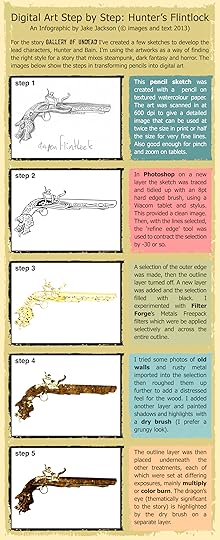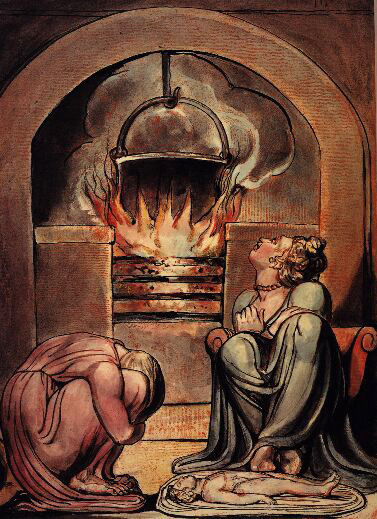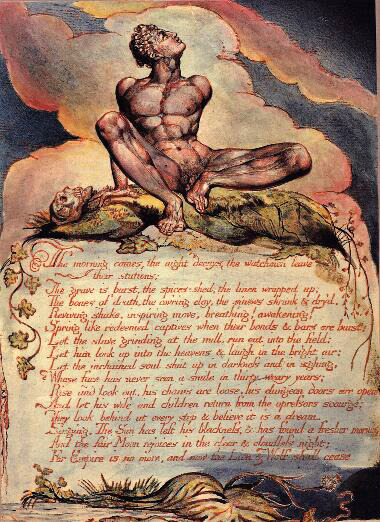Jake Jackson's Blog, page 26
July 23, 2013
Writer’s Journal: Character Sketches 01
 There are many different ways into a new story. This time I decided to draw the main characters and some of their items for a fantastic new tale. Hunter and Bain feature in a number of stories, but this one is the end of a linear time sequence, so I’m trying to keep the exposition down to a bare minimum which helps the mystery of the narrative and allows a swifter flow of action.
There are many different ways into a new story. This time I decided to draw the main characters and some of their items for a fantastic new tale. Hunter and Bain feature in a number of stories, but this one is the end of a linear time sequence, so I’m trying to keep the exposition down to a bare minimum which helps the mystery of the narrative and allows a swifter flow of action.
I’ve been exploring some horror and steampunk themes recently so discovering a Venetian flintlock set me onto a new path. At some point I hope to make some images available as part of the promotion for the books, or integrated into the books themselves. I’m undecided because I prefer to build word pictures and engage with readers to create worlds together rather than be overtly prescriptive.
Anyway, here’s a simple infographic on how to turn a pencil sketch into a simple digital painting. It’s helped me clarify my approach and might be of some interest.
Writing Tips
From The New York Times, an interesting article on character development, here.
From onceuponasketch, Joss Wheedon’s top writing tips for movie writers but useful for all writers, here.
And some other posts on this site you might be interested in:
Writer’s Journal: The Struggle to Write
Writer’s Journal: The Time vs equality Equation.
Other writing links in These Fantastic Worlds can be found here.
Do you have any other strategies for creating characters? I’d be interested in your comments.
Filed under: Fiction, General, Writer's Advice Tagged: Dark fantasy, digital art, Horror, infographic, steampunk

July 16, 2013
Writer’s Journal: Success and the Self-Publisher
 Indie Publishing, or self-publishing, is slowly assuming a skin of respectability. It’s a thin skin, subject to the puncture of snobbery, self-doubt and, ultimately, the bruising engagement with readers, but self-publishing is a democratising force for thousands of people who don’t have the contacts or the desire to submit to the withering forces of traditional publishing.
Indie Publishing, or self-publishing, is slowly assuming a skin of respectability. It’s a thin skin, subject to the puncture of snobbery, self-doubt and, ultimately, the bruising engagement with readers, but self-publishing is a democratising force for thousands of people who don’t have the contacts or the desire to submit to the withering forces of traditional publishing.
However, anyone serious about indie publishing has to be clear-headed about the process. It’s not just about the writing, or the marketing, or the social media, or the reviews. It’s a way of life. It has to be integrated into everything you do, otherwise you will not succeed.
Self-Publishing as a Business?
Many people online talk about it as a business. I’m not sure it’s helpful to think in these terms. I think what they really mean is ‘take it seriously, don’t play at it’. For most writers of fiction, especially self-publishers the feat of writing is the act of finding tiny spaces of time in a busy life, between family and other work or freelance commitments. With it comes dreams of success, appreciation, simple acknowledgement. A business though, to survive, needs to make a profit, to pay its bills, to bring in money to fund development and research, to bridge the gap between paying out for goods and services and the point where customers pay for what they’ve received, to pay the employees, the rent.
A self-publisher has the luxury of not having to think like this: focus on the writing, think about the world of the book. Think about the audience too, but just get on and write!
Fitting it in
There is a distinction between the professional writer, the copywriter or journalist whose writing is costed and planned, who bill for the word or by the hour, who negiotiate with a third party before putting pen to paper, and the mainly fiction writer who fits everything in around the real business of living and working.
I know writers who take their children to school, squeeze in an hour of writing before the shopping and other chores take over, I know others who get up early to feed on the calm of early morning, and those who wait, tired at the end of the day, for everyone else to go to bed, to wrap themselves in the blanket of the night and write while everyone else sleeps their life away.
For the 95% of writers who are trying to express themselves in their writing, the life of writing is the act of planning and crafting, writing hasty notes during the day, observing relationships and events all around, remembering the sunsets, the concantation of sounds as the natural world fights it out with the industrial all around us, the aromas of the shops, the memories of our past and the fleeting insights that assault our everyday lives.
What is Success?
Beyond this, there is the serious business of defining success. We all have a personal vision of success and should not be bullied into a received wisdom about success. When I was a teenager I remember my first poem was published in a small journal called Wayfarer. I had no connection with them, they had chosen the poem on merit and oh boy was I chuffed? It kept me going for months. That was a success at the time and gave me confidence in every other part of my life. I don’t think I told anyone about it at the time because I didn’t know anyone who wrote, or anyone who would understand how much it would mean, but that didn’t matter: I knew, that’s what mattered. Now we have Twitter and Facebook, Google+, Tumblr, blogs and so much more to share these personal successes.
So, success in self-publishing is about setting personal goals and working consistently at achieving them. Whatever our circumstances all creative writers feel compelled to write, but to combat the dark forces of distraction and procrastination we need to identify our goals. Sometimes of course, these goals change as we adapt to new circumstances and barriers.
At the moment, my goal is to create a corpus of genuinely good writing, in a fictional world that encompasses novels, short stories and novellas. When I’m happy with the writing, when it’s edited, then I’ll be ready to release and promote it, whatever the consequences!
By the way, the image at the top of this post is another photo from my writing space, with a few treasured books, a 1975 Fender Strat and some of my daughter’s endless supply of items in need of repair.
Writing Tips
From the Creative Penn website, an article on lessons learned from a first publishing deal, here.
From Kristin Lamb’s blog a terrific post on honing your self-publishing skills, here.
And some other posts on this site you might be interested in:
Writer’s Journal: The Struggle to Write
Writer’s Journal: The Time vs equality Equation.
Other writing links in These Fantastic Worlds can be found here.
Do you have any strategies to keep yourself going? I’d love to hear.
Filed under: Fiction, Writer's Advice Tagged: Fiction, science fiction

May 23, 2013
Writer’s Journal: The Quality vs Time Equation.
 Writing brings both joy and pain. Any creative endeavour is a raging conflict between these two elements. Sometimes you can work all night but end up with ashes in your hands. Lawyers bill their time but a writer / artist / musician can spend hours getting absolutely nowhere.
Writing brings both joy and pain. Any creative endeavour is a raging conflict between these two elements. Sometimes you can work all night but end up with ashes in your hands. Lawyers bill their time but a writer / artist / musician can spend hours getting absolutely nowhere.
Obviously there are strategies to narrow in on this, routines that can be developed, but ultimately the productive, creative spark can abandon us to the painful frustration of time fleeing past at great speed.
Throughout my adult life I’ve made things. Something drives me on. I describe myself as a writer, musician and artist; the truth is it’s very difficult to do more than one of these at time. Over the last thirty years I’ve written non-fiction, fiction, poetry, songs, instrumentals, painted and illustrated, played in bands, arranged music, recorded overnight, written musical notation and much more. Wherever possible I’ve tried to find syntheses between these various expressions of that creative scratch within.
Frustratingly I’ve found it impossible to find a consistent quality. Of the various music books I’ve written or contributed to (over 20), I’m genuinely pleased with three. Of the 120 songs I think probably 15 are good. In terms of painting and illustration, perhaps only 10 of many hundreds of pieces of work are really excellent.
My view on this is that if I really think it’s good I don’t care what anyone else thinks. It will have taken a life of its own beyond my part in its origin. I used to have a three month rule where I would put something out of sight for that period of time. When I pulled it out again I would know instantly: a good piece of writing, art or music would be effortless, not appear to be mine at all. In something awkward or unsuccessful I would remember the torture of the crafting, bristle at the compromises, wince at the unresolved passages.
Perhaps the real problem is the brute force of daily life: pay the mortgage, grocery bills, bring up our children to be good, responsible and free-thinking individuals. It’s hard to be creative with all of this going on.
Strategies
Well, for last couple of years this is how I’ve made progress on the writing front at least:
Set time aside to work creatively, and stick to it.
Give yourself a word target. Don’t be too ambitious. You can always step it up at a later stage.
Don’t worry about what anyone else thinks. Enjoy what you write / illustrate / play. It shows if you don’t.
The world is a very large place. There are people out there who will like what you do. You just haven’t met them yet.
When you’ve finished the creative work, be prepared to craft it (editing, finishing, tweaking), then leave it for at least a month before you look at it again.
One final point: talk to your family and friends about what you do so they understand how important it is to you. They won’t necessarily be enthusiastic about exactly what you do but it will give you a subtle form of pressure when they ask you how it’s going. I have a jazz trumpeter son who isn’t particularly fond of my flamenco playing, but accepts it as part of who I am. We all need this simple acceptance.
By the way, the image at the head of this post is the immediate view above my computer while I’m writing. I made the lamp-stand years ago and the starting sketch was for a wizard in a children’s jigsaw book. Whenever I look up from my writing, these two objects make me smile!
Writing Tips
Here are some writing and book marketing links that have helped me this week:
From Daily Writing Tips: What is Creative Writing?
From be-a-better-writer.com: How to Plot a Novel
From 99U: How to Get Things Done.
Other writing links in These Fantastic Worlds can be found here.
Do you have any strategies to keep yourself going? I’d love to hear.


May 9, 2013
Iron Man Three: Movie Review
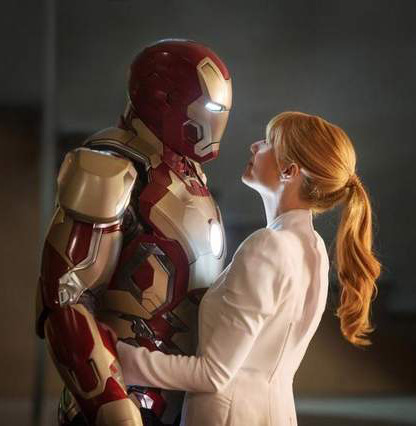
Iron Man. Or is it?
Excellent, entertaining, playful and magnificent, this is a fantastic movie that builds on its successful predecessors while bringing in some fresh ideas. The film develops a few key, interconnected themes from the earlier movies, ranging from the dangers of weaponising science, to exploring the essence of the superhero. Is Tony Stark Iron Man, or is it the otherway round? And is it ever possible to halt the inevitable power = corruption equation?
The storyline presents us with the rich, arrogant, undeniably talented Tony Stark challenging the Mandarin, a super-terrorist, who threatens both the everyday citizen and the President of the United States. With a series of tricky twists and turns Iron Man Three plays skillfully with masks and shadowplay, subterfuge and dramatic irony.
The Good
So, our embattled hero is affected by the events of the Avengers movie. It’s good to see this, there’s a genuine sense of Tony Stark carrying the alien invasion and the destruction of much of New York, on behalf of his new audience, one that knows aliens and superheroes exist. It’s a parallel world to our own, but one we gladly buy into. As such there is plenty of backchat about the Avengers, particular in the hilarious and effective scenes with Harley. In fact the optimism and opportunism of Harley plays well against Tony Stark’s cycnical narcissism and offers some of the best lines in the film.
 I went to see this with my partner and daughter (my son had already seen it last week and loved it), and generally we seemed to agree on the best scenes:
I went to see this with my partner and daughter (my son had already seen it last week and loved it), and generally we seemed to agree on the best scenes:
The army of iron men, subtly trailed at the beginning with a highlight on the Mark 42 suit. The emphasis on remote control of the suits was used playfully in the first part of the film, with some neat trickery that displayed Stark’s deluded obsession with technology and the emotional fragility of his genius. As the film moved on, the use of the remote control became darker, threatening (especially when one of the suits nearly attacked Pepper Potts) but ultimately triumphed in one of the best battle scenes in comic book movie history.
The implication of the remote use and the core threat of (bio)technology that sits behind the film also drives many other effective moments, particularly with Stark’s latest Iron man suit running out of battery and misfiring throughout the rest of the film, mainly when it was most needed. But also the human determination that drives Stark’s to reach beyond the limits of his damaged suit to achieve a scintillating rescue of eleven people from an exploding plane.
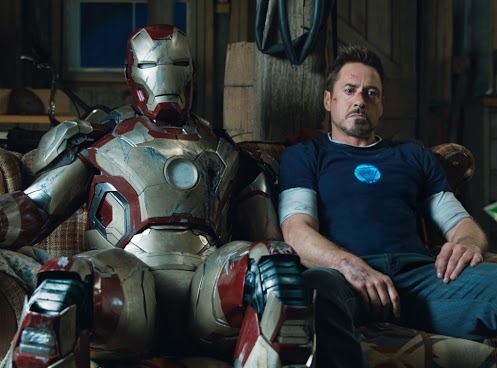
Iron Man & Tony Stark. Together.
In many ways this is a film full of this sort of humanity. From the playfulness of the interactions between Stark and Harley, the terrific reveal scene with the Mandarin and the very funny moments with Stark sitting next to his suit, on a sofa, as though watching TV together. But there’s more to it than that, the memorials of the bomb-blasts play quite sensitively with post-Boston Marathan bombing sentiments and there are many cultural nods to the terrorism vs freedom fighter duality. Just who is the enemy here? It turns out to be something and someone far less obvious than the potentially corny threat of the first few scenes in the film.
In spite of the aggression and male swagger that marks Robert Downey Jnr’s excellent performance he is matched, when allowed by the script by the elegant, no-nonsense approach of Gwynneth Paltrow’s Pepper Potts. There are several scenes, when she combines the emotional strength of her gender with a transcending power of determination and skill, particulalry the defining climax of the battle as she takes down a suit then beats the bad guy in one pretty swift movement. Her subsequent expression of shock and triumph was worth the ticket price alone.
The Bad
There isn’t much to complain about. There’s an occasional moment that perhaps intends to pay homage to the 2D comic origins of Iron Man (such as Tony stark pulling the suit across the snow) but can seem a little awkward, and the scene at the beginning with Stark’s behaviour giving us the inevitable motivation for a comic-book villain’s revenge was a little too obvious. But I am struggling for any real issues. I suppose I don’t care much for Iron patriot but I recognise it will resonate with US audiences and was used well as a plot device.
 A final thought on the negatives, The Mandarin reveal was brilliant at that particular point in the film and contains some of the best acting you could wish for. The audience roared with laughter, as we all enjoyed the deception. It provided some comic moments throughout the rest of the film but as I left and since, I feel slightly let down about it. Perhaps I don’t like being manipulated? Or perhaps the twist was too obviously a plot device to make us think harder about our perceptions and prejudices.
A final thought on the negatives, The Mandarin reveal was brilliant at that particular point in the film and contains some of the best acting you could wish for. The audience roared with laughter, as we all enjoyed the deception. It provided some comic moments throughout the rest of the film but as I left and since, I feel slightly let down about it. Perhaps I don’t like being manipulated? Or perhaps the twist was too obviously a plot device to make us think harder about our perceptions and prejudices.
The Future
Well, it feels like the end of an era with destruction of all the suits and the removal of the shrapnel, Stark’s recommitment to a life with Pepper and the towing away of Jarvi’s arm. But clearly, it is a kick start into the next Thor, Captain America, Avengers, perhaps A Guardians of the Galaxy, Ant Man and Dr Strange movies: who knows? But on this evidence, the second wave of Marvel movies will be as great as, if not better than, the first.
Ratings (out of five stars)
Entertainment value: ***** Story rating: ****
So, the overall rating is:
A Fantastic *****

The revenge of the suits
Links
These Fantastic World Links: 2013: Top 10 SF and Fantasy Movies, Iron Man 3 Trailer
What did you think? Was it worth the wait? Did the twists work for you? Please leave a comment below. Thank you.


May 6, 2013
Writing Journal: The Struggle to Write
 This weekend’s writing sessions were very hard. I spent too much time trying to think my way back into the story.
This weekend’s writing sessions were very hard. I spent too much time trying to think my way back into the story.
That’s the trouble with writing just at weekends, the five day gaps between sessions clutter up with work, family and other commitments, clambering across my exhausted mind like a babble of oblivious toddlers. Or an invasion of impetuous orcs. Or a slither of dark shadows. See, it’s easy to be distracted.
Anyway, I’ve decided to write some smaller posts as well as the usual ‘pillar’ posts. I’ve had a very positive reaction to the longish and ongoing pieces on Modernism, William Blake etc but I can see the need for some shorter pieces in between.
So this is the first one. It was obvious what to write this week. I had a so much trouble putting anything worthwhile onto the computer, let alone string together some meaningful sentences.
At the moment I’m trying to finish a novella called The Graveyard Planet. It’s a space-opera fantasy set in the same world as various short stories and a main novel (Echoes in Time) which are almost ready to be edited.
Method
Here’s what I set out to do every Saturday and Sunday morning.
Make some coffee and think about the end of the last writing session.
Go to my study (pictured above).
Open up the software (I use Scrivener, it’s great).
While Scrivener opens, find some music on iTunes or Spotify to block out all other sounds
Read the last paragraph and any planning notes I’ve left myself.
Ignore any chat, calls, device notifications.
Write 1000 words.
Plan the start of the next session in a few short phrases.
Easy.
Oh no it isn’t!
Madness
This week it went something like this:
Made coffee, sat down, opened software and music.
Ignored the texts from son at university.
Started to read last paragraph and notes.
Felt guilty. Replied to son.
Read last paragraph again.
Son replies. Twice. Then rings.
Read last paragraph again.
Remembered an old novel I wrote years ago. Missing some text, but have printouts. It’s not very good. Will have to rewrite but not this year. Try to remember where it is.
Read last paragraph again.
Shopping delivery arrives. Help bring in the shopping.
Read last paragraph again.
Loving daughter is fed up and comes in for a chat.
Look at Twitter. Talk to friends
Read last paragraph again.
Resort to chocolate and type a line edit in last paragraph.
Son texts. Needs help. Try to help. He rings. Try to help.
Look at Twitter. Talk to friends
Look at Facebook. Talk to friends.
Worrying about my writing voice. Seems to have become too simple, too direct.
Coffee finished. Route 1 method to start writing now drying at the bottom of the mug.
Music beginning to irritate me. Seek something that shuts out sounds, rather than demands attention. Discover Swedish band Katatonia is not the Welsh band, of the same name, of my youth. Try them out. Thank you Spotify. This helps me start.
Read last paragraph again.
Son begin to use Spotify so it turns off my connection. Choose music from iTunes. Look up artist biog on internet.
Look at Twitter. Talk to friends.
Resort to Chocolate. Go Downstairs.
Decide to do some gardening.
Make more coffee.
Go back upstairs.
Look at Twitter. Talk to friends
Worry that the background of my blog looks so poor on the iPad. Try to fix it.
Look idly at the images on my wall.
Look idly at the LPs behind me.
Look idly at the books on my right.
Look at my lovely sidelamp (I made it years ago from a found root in the garden). Recall years of designing inappropriate lampshades.
Listen to mumblings from next-door neighbours.
Worry that the story is not dark enough, interesting enough, too convoluted, too simple.
Phone battery beeps. Take it to another room to recharge.
Sit down again.
90 minutes have passed. I’ve written precisely 10 words. Threads of concentration now a twisted wreck.
Shout at myself. Mumbling neighbours go quiet.
Decide to stop worrying about grammar and tense (writer’s joke, haha!)
Remember an idea from yesterday and write solidly for 30 minutes.
Finish 1100 words. Back-up and escape the room.
So, it was a painful journey.
Writing Tips
I have loads of wise and experienced friends on Twitter and through this blog, many of whom have some truly fantastic advice which I use frequently and pass on to others as much as possible.
Here are some writing and book marketing links that have helped me this week:
From Daily Writing Tips: 7 Types of Possessive Case
From Melissa Foster: some great marketing advice
From Elephant Journal: Some great blog marketing tips.
Other writing links in These Fantastic Worlds can be found here.
If any of this sounds familiar or has been useful, I’d be interested to here. Please comment below!


April 26, 2013
Only Connect: Fantastic Futurism
 “Why should we look back, when what we want is to break down the mysterious doors of the Impossible? Time and Space died yesterday. ” So announced Filippo Tommaso Marinetti’s in his 1909 ‘Fondazione e Manifest del Futurismo’ (The Founding and Manifesto of Futurism).
“Why should we look back, when what we want is to break down the mysterious doors of the Impossible? Time and Space died yesterday. ” So announced Filippo Tommaso Marinetti’s in his 1909 ‘Fondazione e Manifest del Futurismo’ (The Founding and Manifesto of Futurism).
Along with all other forces of Modernism the Futurists were both agents and reflections of the change in Western societies at the beginning of the 19th century. A true force for the fantastic, they rejoiced in the consequences of the scientific and industrial. Futurism though is much neglected. The reckless language of its founders, the advocacy of war, anti-feminism and extreme patriotism has undermined its position at the epicentre of Modernism.
The Effects of Urbanisation
The certainties of 19th Century formality and the figurative, descriptive in art, the search for classical notions of ‘truth’ and ‘beauty’ that lay, for instance, within the paintings of Alma Tadema, the music of Schumann, the novels of George Eliot, were all undermined by rapid undustrialisation. This ineluctable force led to the greater movement of peoples and ideas in the closing decades of the 19th century. Canals had been replaced by trains, letters delivered by horse were eclipsed by the telegraph; life became faster, noisier and more dynamic under the crescendo of scientific innovation. The popularisation of photography for instance had already removed the hideous burden of portraiture from the painter and this was followed by the exhilaration of moving pictures (the ‘movies’) at the close of the Century. The restrictions of the past could be seen for what they were, barriers to be leapt over; for the first time it became possible, and credible, to explore the imagination without the stultifying weight of institutional, classical forms and the status quo.
Form Reflecting Content
For many artists, writers, painters, musicians and scientists the desire to express their response to the changes around them, both in its consequences and processes, became irresistible. This post focuses on one of the most significant proponants of Modernism, the Futurist, Filippo Tommaso Marinetti.
An Italian writer and firebrand Marinetti is intriguing because he leads us to many forms of the fantastic: science fiction, surrealism, atonal composition and modern theatre, amongst others. He was heavily influenced by Baudelaire, whose rejection of realism in the 1850s and 60s are the true roots of modernism and whose translations of Edgar Allen Poe brought a very modernistic reading of terror and mystery to a literature-devouring reading public. The work of Marinetti himself informed an entire generation of the European and American avant garde.
 His 1909 The Founding and Manifesto of Futurism was published on the front page of one of the world’s most influential newspapers, Le Figaro. Writing with the fervour of a revolutionary Marinetti declared his determination to rattle society and report the the sounds and colours of the new world, with a heartfelt desire to raise a once culturally dominant, his beloved Italy from its ancient slumber. Just two of his aims:
His 1909 The Founding and Manifesto of Futurism was published on the front page of one of the world’s most influential newspapers, Le Figaro. Writing with the fervour of a revolutionary Marinetti declared his determination to rattle society and report the the sounds and colours of the new world, with a heartfelt desire to raise a once culturally dominant, his beloved Italy from its ancient slumber. Just two of his aims:
2. The essential elements of our poetry will be courage, audacity and revolt.
3. Literature has up to now magnified pensive immobility, ecstasy and slumber. We want to exalt movements of aggression, feverish sleeplessness, the double march, the perilous leap, the slap and the blow with the fist.
…show the energy of his manifesto. His inflammatory language stirred young painters of his own country (Boccioni and Severini contributed to their own Futurist Manifesto of Painting) but stirred many others including Ezra Pound (who was flirting with imagist poetry during this period and would become the midwife to T.S. Eliot’s great works of Modernism, Four Quartets, The Wasteland); Wyndham Lewis and the Vorticists; James Joyce’s Ulysses and the time and space experiments of Picasso and the cubists. These all have common themes: they reject the precepts of the past, they explore the dynamic forms and processes of their art rather than adhere strictly to the received wisdom of the traditional. In the period between 1910 and 1930, highlighted by the shock of The First World War (the ‘war to end all wars’ that did not), wave after wave of cultural change was sent crashing through society. Marinetti was at the hub of this transformation.
The Work of Marinetti
 Filippo Tommaso Marinetti revelled in the form of writing: the physical nature of the book, for instance, the use of typography, the colour of the type on the page that could be to used to convey his message, not just the meaning of the words themselves. Although common now, such techniques were revolutionary and much derided by institutions of culture, the Royal Societies and the government bodies. For Marinetti though, even the means of mass production, the physical distribution of the book or the pamphlet, provided the perfect instrument for his message that industry and urbanisation should and could be represented in art. His ‘Zang Tumb Tumb’ of 1912 (seen left here and at the top of this post), an account of the battle of Adrianopolis (now Turkey) used an astonishing array of techniques, with different typefaces, font sizes, the breaking of lines, borders and margins, to convey the sounds and impact of battle.
Filippo Tommaso Marinetti revelled in the form of writing: the physical nature of the book, for instance, the use of typography, the colour of the type on the page that could be to used to convey his message, not just the meaning of the words themselves. Although common now, such techniques were revolutionary and much derided by institutions of culture, the Royal Societies and the government bodies. For Marinetti though, even the means of mass production, the physical distribution of the book or the pamphlet, provided the perfect instrument for his message that industry and urbanisation should and could be represented in art. His ‘Zang Tumb Tumb’ of 1912 (seen left here and at the top of this post), an account of the battle of Adrianopolis (now Turkey) used an astonishing array of techniques, with different typefaces, font sizes, the breaking of lines, borders and margins, to convey the sounds and impact of battle.
Futurist Poets
Other Futurists poets, such as Paolo Buzzi, Anatol Stern, Jaroslav Seifert, explored what they considered to be essential aspects of Futurist literature: intuition, analogy, irony, abolition of syntax, metrical reform, onomatopoeia and synthetic lyricism. These seven tenets were considered to be essential in the battle against tradition and representational forms. Novels, per se were considered to be old fashioned and elaborate, lacking in compression and intuition. Later, the work of Virginia Wolf and Graham Greene were amongst the first works of fiction in the 20th century that began to answer these specific concerns and offered a way out of the classic nineteeth century novel.
Marinetti and Robots
 Another of Marinetti’s ground-breaking works includes Elettricità Sessuale, his Synthetic Theatre play of 1913 (based on an earlier version Poupées Electriques) which introduces the concept of robotic forms. His explorations of speed, the mechanical and industrial had led him inevitably to the beneficial consequences of a world that encourages man-made, mechanical helpmates. His intention was to shock his audiences and the play’s themes of exhibitionism, voyeurism and open sexuality were abhored by the conservative institutions of the day.
Another of Marinetti’s ground-breaking works includes Elettricità Sessuale, his Synthetic Theatre play of 1913 (based on an earlier version Poupées Electriques) which introduces the concept of robotic forms. His explorations of speed, the mechanical and industrial had led him inevitably to the beneficial consequences of a world that encourages man-made, mechanical helpmates. His intention was to shock his audiences and the play’s themes of exhibitionism, voyeurism and open sexuality were abhored by the conservative institutions of the day.
Elettricità Sessuale both casts back to Mary Shelley’s Frankenstein, a biological robot whose malady is to be too human, and forward to Karel Čapek’s RUR (which popularised the notion of the ‘robot’) and the mechanical city of Fritz Laing’s 1925 cinematic Metropolis (a dystopian tale of human authority, the power of machine and the consequences for working people). How much does subsequent and modern science fiction owe to Marinetti’s explorations? The pulpy sf novels of Abraham Merritt’s 1920 ‘The Metal Monster‘ and H.P Lovecrafts’s ‘At the Mountains of Madness‘ (1931); Asimov’s iconic ‘I Robot‘ (1950); the dystopian visions of Aldous Huxleys ‘Brave New World‘ (read the book here); the entire imaginative canon of Philip K. Dick, including ‘Do Androids Dream of Electric Sheep?‘ (1968, text here) and it’s iconic film version, Ridley Scott’s 1982 ‘Blade Runner‘; and The Matrix movie trilogy with its machine city.
‘Degenerate Art’
Marinetti’s aggressive language, his desire to smash the traditions of the past and strike the vital spark of the new led him to use the language of war and terror. He influenced anarchists, vorticists, cubists and imagists. In spite of being an early supporter of fascism and Mussolini in particular Marinetti’s work, along with other Futurist poets was included in Hitler’s 1936 list of Entartete Kunst, Degenerate Art (which included Kandinsky, Klee, Chagall and other Modernist artists). It is hard not to judge an artist by his political convictions, especially when one such as Marinetti wears them so brazenly, (Ezra Pound suffered badly at his own hands by supporting and broadcasting for the Fascists in the second World war) but Marinetti’s essential contribution to the development of the Fantastic should not be ignored and his work can be admired for what it is: quintessentially personal, powerful and magnificent.
The influences of his work can be found in the fibres of so many artists, composers and writers, many of whom will be the subject of the next few posts in These Fantastic Worlds.
The next post will focus on the Fantastic Worlds of Futurism in Art
 Only Connect
Only ConnectThe thread for this series of posts begins with Only Connect.
Helpful external links: Marinetti’s futurist manifesto; Baudelaire and his works; more about Marinetti and Futurism here and here; a version of Metropolis with a soundtrack from Pink Floyd. (Sounds like a copyright nightmare to me, but thank you Youtube for this version of an incredible silent film).
Pinterest Board with other Futurist images here.
Coming soon: Futurism in Art; Futurism in Music; Cubism; Vorticism; The Fauvists; Abstract Expressionism in Art; Pop Art; Pulp Magazines; Baudelaire and the Symbolists; Bauhaus; Debussy’s Expressionism. Einstein and the Fantastic.
Other interesting Links from this blog: William Blake and Revolution, Total Recall and Philip K. Dick, The Matrix movie


February 26, 2013
Fantastic Sketches: Barry Windsor Smith
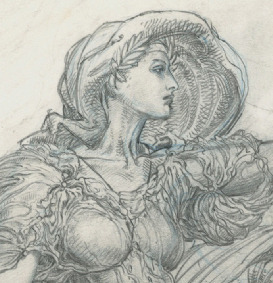 The true skill of an artist is revealed by the bare lines of their drawing. It might be a finished pencil piece, a working sketch for painting, or the pencils for a comic book, waiting for the inker to carve their black definitions and the colourist to splash the tones. A decent artist’s talents lie naked amongst the interplay between line and texture.
The true skill of an artist is revealed by the bare lines of their drawing. It might be a finished pencil piece, a working sketch for painting, or the pencils for a comic book, waiting for the inker to carve their black definitions and the colourist to splash the tones. A decent artist’s talents lie naked amongst the interplay between line and texture.
Barry Windsor Smith (BWS) is rather more than a decent artist.
To demonstrate the power and eloquence of his art I’m showing here a preliminary sketch for 1978′s Fate Sowing the Stars (I came across it on comicartfans website, thank you!), and a sketch for Icarus (1981). It’s easy to admire the sensitivity and grace of the line, the energy of the overall form. As interesting is to compare it with two fine art masters: Leonardo da Vinci, that pinnacle of High Renaissance, and the Victorian delicacy of John Millais who flirted with Pre-Raphaelite styles for his subject matter and painting techniques but was, ultimately, a superb creator of form and expression. All artists, whether da Vinci, Millais, Picasso or Dali are prisoners of their generation, sometimes ‘building on the shoulders of giants’, sometimes rejecting them; BWS explores ancient symbols, using mythological subjects, ancient muses and cosmic concepts, addressing his subject-matter with a modern sensibility.
So, in order, here are the sketches for Barry Windsor Smith’s Fate Sowing the Stars and Icarus, Leonardo da Vinci’s charcoal and chalk ’cartoon’ The Virgin and Child with St Anne and St John the Baptist (c. 1506) and John Everett Millais’s pencil study for Mariana (c.1851). Finished and related paintings, based on these sketches can be found on this Pinterest Board.
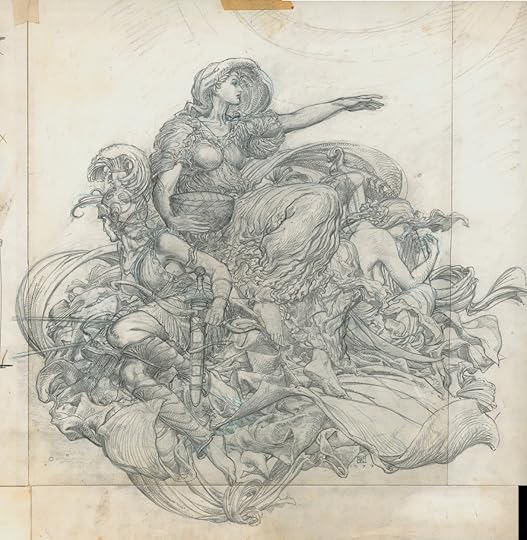
Fate Sowing the Stars, 1978

Icarus sketch 1981
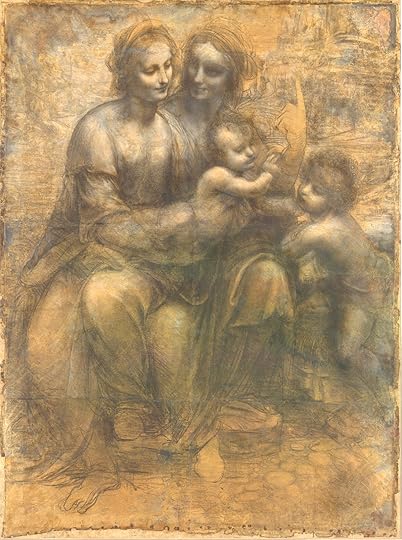
Virgin and Child with St. Anne ’cartoon’
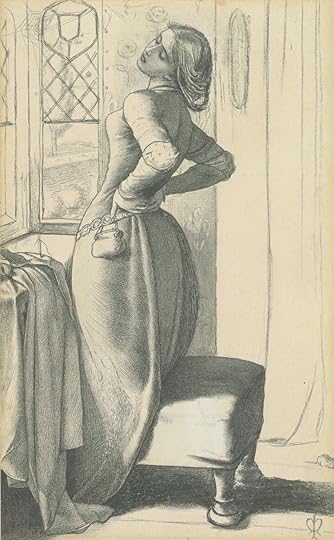
Study for Mariana


January 17, 2013
2013: Top 10 SF and Fantasy Movies
 Our sensory experience of going to the movies has been utterly transformed in the last few years, with CGI, motion capture and (half-decent) 3D allowing us to inhabit a series of fully realised worlds. 2012 was an incredible year for speculative adventure movies with The Avengers (a major triumph), Dark Knight Rises (certainly dark), Snow White and the Huntsman (some fabulous effects), The Hobbit (first of three – I loved its detail and perfected performances), the Spiderman reboot (I wish they’d made a good Spidey movie not another origins film), Dredd (didn’t like this one, but I know many who did), John Carter (derivative but entertaining), Prometheus (I hope the sequel delivers on its promise) and Wrath of the Titans amongst many others.
Our sensory experience of going to the movies has been utterly transformed in the last few years, with CGI, motion capture and (half-decent) 3D allowing us to inhabit a series of fully realised worlds. 2012 was an incredible year for speculative adventure movies with The Avengers (a major triumph), Dark Knight Rises (certainly dark), Snow White and the Huntsman (some fabulous effects), The Hobbit (first of three – I loved its detail and perfected performances), the Spiderman reboot (I wish they’d made a good Spidey movie not another origins film), Dredd (didn’t like this one, but I know many who did), John Carter (derivative but entertaining), Prometheus (I hope the sequel delivers on its promise) and Wrath of the Titans amongst many others.
2013 has some fantastic movies coming too. I’ve whittled these down to a top ten and juggled between SF, high fantasy and horror. Each entry has a poster and a trailer, if the producers have released one. So, in no particular order:
 The Evil Dead (April release)
The Evil Dead (April release)
Remake of the classic horror movie that spawned a thousand imitators. Hopefully the brilliant effects will be matched by the suspense.
Further information here
The trailer below is great tease:
 Iron Man 3 (May release)
Iron Man 3 (May release)
Looks like a change of pace in this one, with Stark being affected by the action of the Avengers rather than being consumed by the scale of his incredible powers. He has to dig deep and resort to his personal qualities to defeat both inner and external demons.
Further information here
The trailer below is pretty awesome:
 Star Trek Into Darkness (May release)
Star Trek Into Darkness (May release)
I’m glad they’ve managed to carve a credible space before the first of the first Star Trek movies so we can have some serious adventures without any daft reboots. This one looks pleasingly dark, with J.J. Abrams at the helm.
Further information here
The trailer below is well-worth watching
I must confess: I’m not a Superman fan. When I was young, it was Marvel that gripped me and the school playground was strongly divided between DC and Marvel lovers. I hated Batman until the movies turned truly dark and added some depth to the character. I’m hoping the new film will do the same for Superman, who, for my taste, is just too good to be true (yes I know superheroes are suffer this in varying degrees).
The film’s synopsis is here.
And the trailer:
A return for Guillermo del Toro whose last film was 2008′s Hellboy II: The Golden Army. It seems to combine an old-fashioned King Kong vibe with Transformer-like technology. It could be a disaster, but it’ll certainly have some delectable moments.
More information here
And the mighty trailer:

 The Wolverine (July release)
The Wolverine (July release)
I can’t find a trailer but as I understand Hugh Jackman makes a gritty return as everyone favourite, angry mutant, Wolverine in a Chris Claremont and Frank Miller inspired tale, based in Japan. Claremont and Miller are core comic creators and their superb work deserves much more credit than it receives, beyond the confines of fans, cognocenti and comicons.
For more information keep an eye on this Facebook page.
 The Hunger Games: Catching Fire (November release)
The Hunger Games: Catching Fire (November release)
In truth this is most eagerly awaited by my daughter who is Hunger Games mad. I’ll watch it willingly because the first one was pretty good. It was much darker than I expected and featured some very strong, moody performances from Jennifer Lawrence and the scintillating Woody Harrelson. I can’t find a trailer for this yet, although it’s supposed to be coming in April.
Some news stories are starting to hit on this now as the publicity machine cranks up.
Official website with news and images here.
 The Hobbit: The Desolation of Smaug (December release)
The Hobbit: The Desolation of Smaug (December release)
Hard to contain myself on this one. Promises to be fabulous. Loved the first film, with its idiosyncrasies and intimate cinematic detail. It was not received well by the critics, but none of this big films do; so far it’s taken 1 billion dollars at the box office and still going. Can’t be all bad eh?
More information here.
Here’s a video with interviews (the trailer’s not out yet):
A nicely scary, supernatural abduction thriller with possession and horror thrown in. I miss the enigmatic drama of the early X-files, with its occasional lapses into horror SF. Hopefully Dark Skies will live up to the trailer which is chilling.
More information here:
Here’s a terrific trailer:
With M. Night Shyamalan as director and the irrepressible Will Smith, this has to be a highly watchable movie. After a spaceship crash lands, father and son (played by Will and son Jaden Smith) explore a planet deserted by humans 1,000 years earlier. Plenty of adventure and suspense. The two movie posters here show very different ways of promoting the film – I wonder which one direction they’ll go in the end.
Further information here.
And here’s the trailer:
Bubbling under
 There are a number of other potentially fantastic movies coming too, but for a variety of reasons they haven’t quite made my top ten: Oz: The Great And Powerful, G.I. Joe: Retaliation, Thor: The Dark World (with Christopher Eccleston), Starwars: Revenge of the Sith (3D version) and Starwars: Attack of the Clones (3D), Oblivion (A Tom Cruise vehicle, hopefully with the style of Vanilla Sky), Elysium (with Jodie Foster and Matt Damon) and finally, after all these years comes Orson Scott Card’s Ender’s Game.
There are a number of other potentially fantastic movies coming too, but for a variety of reasons they haven’t quite made my top ten: Oz: The Great And Powerful, G.I. Joe: Retaliation, Thor: The Dark World (with Christopher Eccleston), Starwars: Revenge of the Sith (3D version) and Starwars: Attack of the Clones (3D), Oblivion (A Tom Cruise vehicle, hopefully with the style of Vanilla Sky), Elysium (with Jodie Foster and Matt Damon) and finally, after all these years comes Orson Scott Card’s Ender’s Game.
So here’s to the next 12 months of incredible celluloid, 3D glasses and these immersive, fantastic worlds. Do you have any other movie suggestions? Let me know in the comment section below, or on twitter.


January 13, 2013
Short film: No Escape
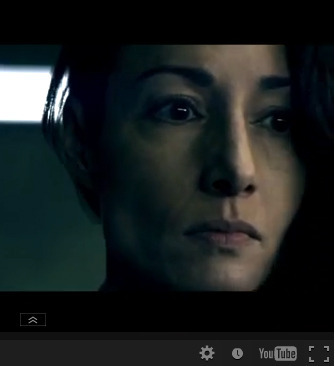 Have you seen the magnificent fanzine site SF Signal? I often check out their book cover stories and new book reviews, but I had not taken their short films as seriously as I should. Big mistake! They are fantastic, 2-6 minutes of tasty cinematic exploration. As sample here’s No Escape, which appeared a while ago, but it stands out as a gripping, terrific short. SF Signal seemed to source this from first showing.net which is a moving-image heavy site, packed with some awesome sf, fantasy and adventure material.
Have you seen the magnificent fanzine site SF Signal? I often check out their book cover stories and new book reviews, but I had not taken their short films as seriously as I should. Big mistake! They are fantastic, 2-6 minutes of tasty cinematic exploration. As sample here’s No Escape, which appeared a while ago, but it stands out as a gripping, terrific short. SF Signal seemed to source this from first showing.net which is a moving-image heavy site, packed with some awesome sf, fantasy and adventure material.
Anyway, here’s the short film, directed by Dan Trachtenberg with Danielle Raine as the lead and Inception’s Mike Zarin composing the score. It’s based on the PC/Mac video Game The Portal (by the Valve Corporation). When you’ve looked at the video here, look out for the related short films at SF Signal, starting with the Scanner.
The thumbnail at the head of this post is a screen grab from the film.


November 27, 2012
William Blake: Artist and Revolutionary.
 William Blake, artist, poet and philosopher, is perhaps easier to admire than understand. The breadth of his vision, the tortured eloquence of his craftsmanship and the bloody-mindedness of his daily life all speak of an intellect wrestling with fantastic worlds that boil and fester within.
William Blake, artist, poet and philosopher, is perhaps easier to admire than understand. The breadth of his vision, the tortured eloquence of his craftsmanship and the bloody-mindedness of his daily life all speak of an intellect wrestling with fantastic worlds that boil and fester within.
Artistically he was influenced by Raphael, Michelangelo and Dürer but his mental life was informed by the political, social and philosophical forces that broke from the moorings of enlightenment (and it’s strict codes of reason and order), fuelling the bloody revolutions of America and France.
Blake’s most productive years stretched from 1788 to 1820, covering the span of the French revolution and its bloody aftermath. This is the period when Beethoven was at the height of his own powers (initially writing the Emperor Symphony for the cultural hero that was Napoleon before disillisuion set in), when the Romantic poets Wordsworth, Shelley, Coleridge and Keats sought refuge in the pastoral and the organic, when Mary Shelley wrote Frankenstein. During this period of muscular Romanticism, Blake was a contemporary (and friend) of Thomas Paine, that fiery spirit of liberty whose publication ‘Common Sense’ inspired the momentum of the American Revolution and whose Rights of Man offered stout resistance to the criticism of the French Revolution and its battle against the corrupt, unjust and pernicious structures of the aristocracy. Unlike a Shelley or a Byron, Blake was not a handsome man and regarded by many as insane, but he was firmly attached to a London intellectual society that explored the limits of liberty and revolutionary thought.
For Blake, this went further than most. He was poor, almost determinedly so, and lacked commercial success, aquiring only slight acknowledgement of his peers. His religious convictions were strong, but unorthodox. He struck hard at the embers of the enlightenment, in his poetry and his paintings, fighting for imagination and personal freedom. His visionary zeal manifested itself through his methods (his paintings exhibit a rough, organic feel, with much of his work using a unique mix of egg compound instead of oils) and the homogeneity of his purpose. His illuminated books, written and exquisitely illustrated by him, are perfect executions of this single-mindedness, with the meaning and themes of the words expressed through the flowing lines of decoration, illustration and the fluid style of the written text itself. His bold style revealed both the organic textures of the real world around him, and the power of the underlying forces in life.
Blake had a complicated relationship with God. He created a Yaweh-like figure called Urizen (Your Reason) whose purpose was to enslave the free spirit of humankind into the prison of the body. In later Prophetic Works Urizen became the Satan figure, reflecting the disillusionment of all revolutionaries when the great libertarian Napoleon began to gather totalitarian powers and generally behave like a misbegotten monarch. For Blake though Jesus was the pre-eminent figure of his belief system, Jesus the Imagination, a symbol for oppressed and suffering, a liberating force for freedom. In Blake’s paintings for his books on America and Europe these great continents were anthropomorphised and illustrated in chains, straining to be free of tyranical order, reason, with Jesus as the revolutionary saviour.
However as with many of his Romantic era companions, Blake was an uncompromising idealist, an artist in its deepest and fullest sense, a vessel of agony and conviction, gripped by forces beyond his understanding, but still consumed by them. This is the fate of all true artists, however appreciated their work is in their own lifetime, and drives modern artists too, such as Jeffrey Catherine Jones.
As a follower of the fantastic in all its forms I see Blake’s ghost in the muscular paintings of Frank Frazetta, the bold illustrations of Barry Windsor Smith, the all-encompassing power of Jim Starlin’s cosmic Captain Marvel graphic novels, but it is hard to match the scale of agonies suffered by a man who is said to have used his last shilling to buy more brushes to complete his last painting, one of a series of watercolour illustrations for Dante’s Inferno.
For more on Blake see here.
A comprehensive site on the life and works of William Blake please see here.
For very good essay on Blake’s ‘grain of sand’, see here.
To see some of his works in the flesh, please go to Tate Britain. Their website features a number of the paintings they own: they are magnificent.
To view the intimate complexity of his writings and illustration, take a look at facsimiles of his work, published by Thames and Hudson. Good places to start are The Marriage of Heaven and Hell; The Songs of Experience; The First Book of Urizen; Jerusalem, The Emanation of the Giant Albion. You can buy these from Amazon or Abe Books for anything out of print.
And here are some of powerful examples of Blake’s art: The image at the head of this post is plate 18 from the First Book of Urizen. Below are: Ancient of Days (Urizon imposing order on the free spirit of mankind, measuring the precise extent of creation with his compass); Elohim Creating Adam (the agonised human spirit being imprisoned in the human body); two views of The Great Red Dragon and the Woman clothed with the Sun; illustration from Europe a Prophecy; illustration from America a Prophecy; The Descent of Christ; illustration from Jerusalem The Emanation of the Giant Albion; illustration from America a Prophecy and Los, from Jerusalem The Emanation of the Giant Albion.



